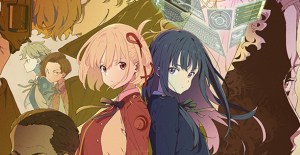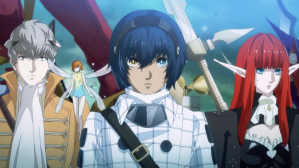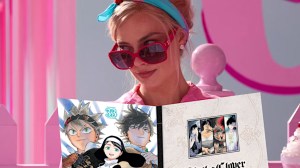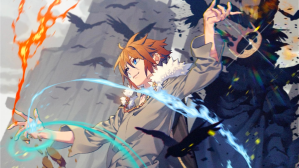In the world of Western comics, Mark Crilley occupies an interesting space. The artist rolled onto the scene back in 2001 with his series Akiko, a whimsical story that has since been nominated for over a dozen Eisner Awards. The fan-favorite comic marks the first time that Crilley’s personal style began to mix with Japanese manga, and the combination has been one that has resonated with fans.
Videos by ComicBook.com
In a recent interview with ComicBook.com, Crilley talked how his artwork has been influenced by Western and Eastern aesthetics.
Of course, Crilley nodded at his previous work with Miki Falls and Brody’s Ghost to kick off the conversation.
“Miki Falls and Brody’s Ghost definitely attempt a mix of manga style with my own artistic sensibilities,” he said. “Akiko was a sort of “pre-manga” project for me: maybe a hint of manga influence here and there, but primarily a traditional American cartooning style.
“My latest graphic novel, The Drawing Lesson, has essentially no manga aspect to it at all. So it [my artwork] really depends on the project and what I feel is best for it.”
As a Western artist, some readers may find it strange that Crilley even looks to manga at all for inspiration.
The medium is an undeniable popular one around the world, but manga continues to thrive in its own subculture when it comes to the U.S. Shows like Pokemon or Dragon Ball Z were quick to sweep foreign audiences into the Japanese Invasion during the early 1990s, but the fervor struggled to continue its mighty climb and settled into a plateau.
However, that trend has taken a turn.
Manga – and anime – has recently reentered Western pop culture with untold forces. Stories such as Attack on Titan and One-Punch Man have spread into mainstream media, and even casual comic book fans are now interested in picking up tankobons at their closest bookshop.
Naturally, Crilley isn’t too surprised by this shifting tide. The artist recalled that he was first introduced to manga when he taught English in Japan, and Crilley was intrigued by the medium’s variety.
“I would flip through the weekly anthologies and admire the uniqueness of the artwork,” he said. “The page layouts, the characters, the sense of humor: It all seemed very fresh and expansive compared to the “superheroes only” comics I grew up.”
Over the years, Crilley says he has seen how manga has gradually began to effect American comic books in both style and content.
“I’ve definitely seen a huge positive influence of manga on the American comics industry,” he explained. “When I started in comics the vibe was very grim and gritty. I think manga helped bring humor and fun back to American comics. Also the range of story types has expanded quite a lot. The idea of a high school romance comic book story, for example, would have been a very “indy” prospect in America back in the 1990s. Now, thanks in part to the influence of manga, it could be a very mainstream top-selling graphic novel.”
In fact, the artist went so far as to say that American comics are undergoing a sort of rebirth at the moment. As more and more stories stray from standard superhero fare, Crilley says the medium finds itself pushed to new limits.
Naturally, no one can quite predict where American comics will be pushed towards as the medium continues to evolve. If Crilley had a say about its direction, the artist said he hopes the stories expand into the world of the average adult reader.
“In Japan you can find comics that are read by housewives and businessmen, covering topics like golf and cooking and so forth,” he said. “I’d love it if we could see graphic novels become super common among fifty and sixty year olds; to have graphic novels be truly just an everyday reading format rather than a “geek-oriented” or “literati-oriented” type of thing.”
So, what do you guys think? What overlap do you all see between comic books and anime these days? Share your thouhts in the comments below!
Read More on Mark Crilley: Review of Mastering Manga 3 \ Next Generation of Artists \ American Crossovers





